ATI4 - Assessment of the Physalia physalis toxins with potential for cosmetics and health
Objectives
O6 – Identification of venom proteins with biotechnological relevance in cosmetic and therapeutic applications using transcriptomics and proteomics coupled with bioinformatics.
O7 – Production of a library of toxin peptides.
ATI4
Venom toxins will be identified by genomics through transcriptomic deep sequencing from P. physalis tentacle tissues to obtain a catalogue of transcripts encoding toxins.
ATI 4.1 - Identification of venom toxins by genomics
Venom characterization will be studied at genomic level. The nonexistence of P. physalis toxins data available in NCBI database hinders the correct identification of toxins. Deep sequencing technologies will be employed to generate transcriptomic sequences from tentacle tissues to obtain a catalogue of transcripts encoding toxins. In silico analysis approach will allow to search gene homology and motifs and the identification of sequences encoding the toxins, which is crucial for the identification of protein structure. These structures will be used to perform structure-based target prediction (using docking analyses) and/ or ligand-based target prediction (by homology). The bioinformatics screening approaches will be critical for enhancing our knowledge on the complexity of venoms and their potential therapeutic. A number of specifically focused databases available, including potassium channel toxins (Kalium database), spiders (Arachnoserver), cone snails (ConoServer) and snakes venom database (ISOB), will be essential for the characterization of genes coding for relevant toxins. The data produced in this task will support the identification of venom proteins in task 4.2. This task will be performed by UAÇ.
ATI 4.2 - Identification of venom toxins by proteomic
Proteomic identification of venom proteins/peptides will provide a clear understanding of repertoire of molecules with biological and biotechnological interest. Cnidaria toxins have been identified and comprise mainly proteins and peptides that are cytolytic or neurotoxic activities, includes 3.5–6.5 kDa voltage-gated sodium (Nav) channels toxins, 3–5 kDa voltage-gated potassium (Kv) channel toxins and ~20 kDa pore- forming toxins. The direct study of the jellyfish venom requires several common steps. Here will be used a nano LC-MS/MS and MALDI-ToF/ToF to study the venom constitutive proteins. For better quality results, the liquid chromatography LC-MS or HPLC may be used. The combination of data obtained in T4.1 and T4.2 will allow to stablish the venom profile of Physalis. Moreover, the identification of venom proteins in this task will permit to identify the presence of relevant toxins highlighted by bioinformatic analysis and to obtain paramount information for protein purification in task 4.3. This task will be performed by UAÇ.
ATI 4.3 - Purification of toxins with putative activity
It is intended to separate the proteins/peptides predicted with biological activities in previous tasks. To perform this separation, tangential flow filtration with different cut-off membranes, combined with size exclusion, reversed-phase chromatography and electrophoresis, will be used. We will focus specially on peptides with less than 10 kDa, which will be enriched using preparative reversed phase chromatography. Almost purified material will be tested for their biological activity in T4.4. This task will be developed by UAÇ.
ATI 4.4 - Characterization of relevant toxins
The mode of action of purified toxins will be studied using Drosophila WT and Drosophila mutants (e.g., VGCCs mutant) using an ethoscope combined with a remote learning algorithm to track the profiling of behaviour in real-time. Annotation labels include the circadian rhythms, the walking distance and velocity and immobilization phenotypes. Drosophila melanogaster is a powerful molecular-genetic “toolset” for the study neurotransmitter transporters and will be used here as a model to study toxin fractions. Butyrylcholinestrasic (BuChE) and acetylcholinesterase (AChE) inhibitory activities will be measured by spectrophotometric methods. The safety of active fractions will be tested measuring cytotoxicity in different cell lines (e.g., HeLa, Vero and SY5Y) and the haemolytic activity using erythrocytes. In this activity we expect to identify new active molecules with new potential applications. This task will be developed by the UAÇ with the collaboration of UM in the cytotoxicity assays.
Participants
- Mesosystem S.A.
- Universidade do Minho
- UAç
- Nofima
Join our mailing list!
Contact Us
More important than what we have to say about ourselves, is what the customers have to say about us.
So let us learn and contact us!
We create possibilites for the connnected world – Mesosystem S.A.
info@mesosystem.com
Phone
Telephone (+351) 227 347 125 (Call to a national fixed network)
Mobile (+351) 924 188 704 (Call to a national mobile network)
Location
Rua de Júlio Dinis 228, 4050-371 Porto, Portugal






